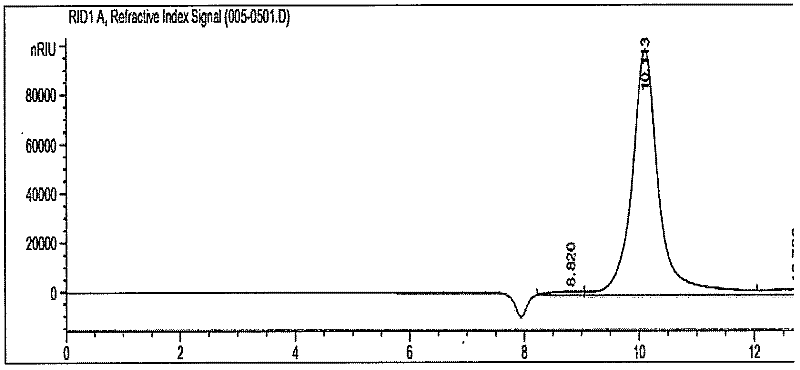Screening method for 2-keto-D-gluconic acid high-yield bacterial strain, and fermentation method of such bacterial strain
A technology of gluconic acid and screening methods, applied in the direction of microorganism-based methods, fermentation, biochemical equipment and methods, etc., which can solve the problems of long fermentation cycle, high energy consumption, low fermentation production efficiency, etc.
- Summary
- Abstract
- Description
- Claims
- Application Information
AI Technical Summary
Problems solved by technology
Method used
Image
Examples
Embodiment 1
[0044] Weigh about 0.2g of soil into 20ml of 0.85% sterile normal saline, shake and mix well, spread the bacterial suspension onto beef extract peptone medium with 5% salt concentration and incubate at 30°C for 24h, and inoculate the purple pigment-producing colonies Put it into the fermentation medium for re-screening, culture at 30°C for 24 hours, and collect the fermentation broth by centrifugation. The fermentation broth is analyzed by the internal standard method in the high performance liquid phase method, and the 2-keto-D-gluconate calcium standard is used as the internal standard , The strain that increases the peak height of the 2-keto-D-gluconate standard product is the 2-keto-D-gluconate-producing strain.
Embodiment 2
[0046] The morphological characteristics of the screened strains were identified according to Microbial Taxonomy. The strains were short rod-shaped, Gram-negative bacteria, without spores, with perinatal flagella, and could move. The colony is round, with smooth edges, moist surface, slightly raised, producing purple-red pigment, and has a foul smell. Physiological and biochemical characteristics (see Table 1), and extract genomic DNA according to the extraction method of the bacterial genome extraction kit, with P1 and P2 as forward and reverse primers:
[0047] P1: 5'-AGAGTTTGATCCTGGCTCAG-3',
[0048] P2: 5'-GGCTACCTTGTTACGACTT-3'.
[0049] The 16S rDNA gene was amplified by PCR, and the BGI Research Center was commissioned to perform 16S rDNA sequencing. After obtaining the partial 16S rDNA sequence of this strain (GenBank accession number: JF794580), the homology comparison analysis was performed on the NCBI website using the BLAST search tool. . Based on 16S rDNA seque...
Embodiment 3
[0054] The strain was preserved in a glycerol tube with a final concentration of 15%. Take 200μl of the preserved bacteria liquid and insert it into 50ml of beef extract peptone medium with 5% salt concentration and cultivate it at 30°C for 12h, and insert it into a 70ml fermentation culture medium with a 10% inoculum size. The base 750mL two-thorn Erlenmeyer flask was used for fermentation. See claim 2 for the fermentation medium, and the initial glucose is 140g / L. Fermentation was carried out at 30° C. and 200 rpm for 24 hours, and the content of 2-keto-D-gluconic acid in the fermentation liquid was determined by HPLC. The output was 119.7g / L, the yield was 0.84g / g, and the production intensity was 3.74g / (L·h).
PUM
 Login to View More
Login to View More Abstract
Description
Claims
Application Information
 Login to View More
Login to View More - R&D
- Intellectual Property
- Life Sciences
- Materials
- Tech Scout
- Unparalleled Data Quality
- Higher Quality Content
- 60% Fewer Hallucinations
Browse by: Latest US Patents, China's latest patents, Technical Efficacy Thesaurus, Application Domain, Technology Topic, Popular Technical Reports.
© 2025 PatSnap. All rights reserved.Legal|Privacy policy|Modern Slavery Act Transparency Statement|Sitemap|About US| Contact US: help@patsnap.com



